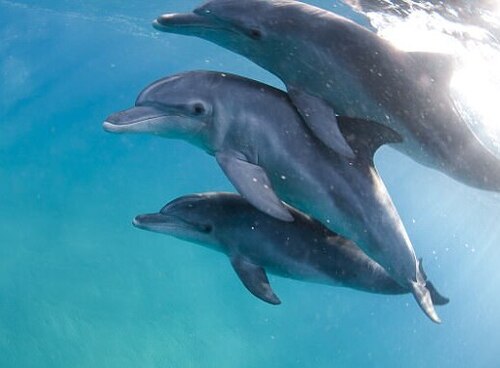The phenomenon of homosexual behavior in animals has been documented across various species, challenging traditional notions of sexuality. Researchers have observed such behaviors in numerous animals, shedding light on the complexities of social structures, mating strategies, and bonding. Here’s a detailed look at some notable examples and when these behaviors were discovered.
Discovery: Bonobos have long been recognized for their sexual behaviors, including homosexual interactions. Observations date back to the 1970s, primarily by researchers like Frans de Waal.
Behavior: Bonobos engage in same-sex activities as a means of social bonding, conflict resolution, and establishing hierarchy. Both males and females exhibit homosexual behaviors, often involving genital rubbing and mounting.

Discovery: Instances of homosexual behavior in dolphins were first noted in the 1970s and 1980s, particularly among bottlenose dolphins.
Behavior: Same-sex interactions are common, including playful behaviors, rubbing, and sexual displays. Male dolphins often form strong bonds through these activities.

Discovery: Research in the 1970s revealed that female Japanese macaques engage in same-sex mounting and grooming behaviors.
Behavior: Female macaques often form strong same-sex bonds, which can lead to increased reproductive success. These relationships are characterized by grooming and affectionate behaviors.

Discovery: A study in the 1990s found that around 8% of rams exhibited same-sex preferences, favoring male partners over females.
Behavior: These rams often engage in courtship behaviors typical of heterosexual interactions, raising questions about the role of hormones in sexual orientation.

Discovery: Same-sex pairing in penguins was first notably documented in the late 1990s at various zoos, including the famous case of Roy and Silo at the Central Park Zoo in New York.
Behavior: Male penguins have been observed forming bonds and engaging in nesting behaviors, raising chicks together in some cases.

Discovery: Observations of homosexual behavior among giraffes were reported in the early 2000s.
Behavior: Male giraffes often engage in courtship behaviors, such as necking and mounting, with other males, which are thought to strengthen social bonds.

Discovery: Research in the 1990s identified homosexual behavior in fruit flies, linked to genetic factors.
Behavior: Male fruit flies may court other males, influenced by specific genes associated with mating behavior, illustrating the complexity of sexuality at the molecular level.

The discovery of homosexual behavior in animals challenges our understanding of sexuality and social interactions in the animal kingdom. These observations not only highlight the diversity of behaviors across species but also prompt further research into the evolutionary, genetic, and social implications of such behaviors. The study of animal homosexuality enriches our appreciation for the complexities of nature and the many forms of love and bonding that exist in the wild.
animal tags: Homosexual
We created this article in conjunction with AI technology, then made sure it was fact-checked and edited by a Animals Top editor.